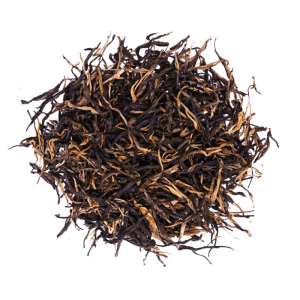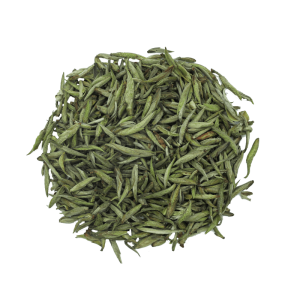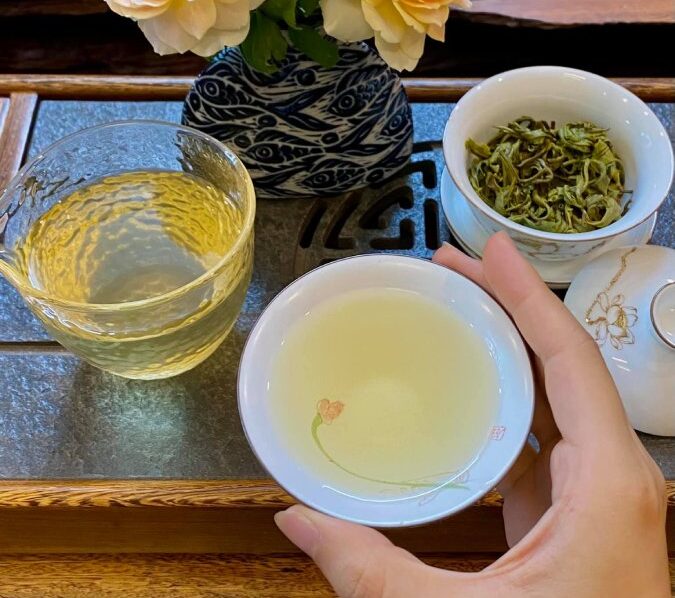
Hiểu hơn về trà khí
Bên cạnh sắc – hương –vị, trà khí cũng là yếu tố rất được trà hữu quan tâm. Trà khí, nói một cách dễ hiểu
Hotline
Hacoocha
At dinner at Glassbelly Tea Lab, an upscale restaurant in Hong Kong, neither abalone nor Wagyu A4 Japanese beef were the stars. Instead, eight new cups of tea are what draws patrons to this wooden space in the busy Causeway Bay neighborhood of the city.
On the left are three small cups containing three different hot teas: plum-flavored Puerh tea, Dian Hong Gold Needle (a relatively new black tea from Yunnan) and peat-flavoured Rougui (an oolong tea from the Ranges) Wuyi Mountain in China's Fujian Province).
To the right is Full Blossom Rougui tea served in five glasses of Riedel crystal wine. The waiter introduced: “If you use a Cognac glass, you can feel more fruit flavors. As for a glass of Burgundy, the floral scent will be more fragrant.”
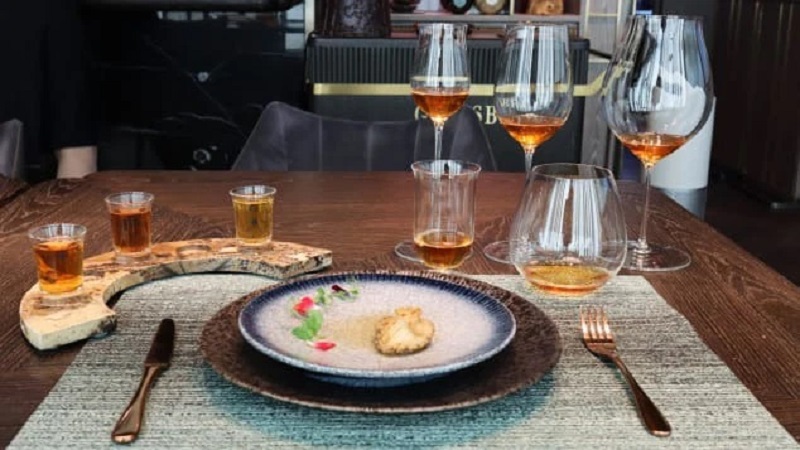 At Glassbelly, Chinese teas are served in wine glasses
At Glassbelly, Chinese teas are served in wine glassesThe unusual service has attracted many people to this restaurant, but the highlight is the Chinese tea leaves costing thousands of dollars. Glassbelly Restaurant specializes in oolong iced tea from Wuyi, one of the most expensive tea varieties on the planet. It is the type of oolong tea that grows on rocks in the Wuyi Mountains of eastern China, hence the name "ice tea".
Famous varieties of iced tea from this region include Rougui, Da Hong Pao and Shui Xian – which respectively mean Cinnamon, Big Red Cloak and Daffodils. Glassbelly's most prized item is Niu Lan Keng Rougui, a rare Rougui tea from a spring in the valley of the same name in the Wuyi Mountains.
The retail price of this tea is 4,560 USD (more than 100 million VND) for 25 grams, or 184,615 USD/kg (about 4.2 billion VND). To enjoy a cup of tea at the restaurant, customers will have to spend 3,577 USD (81 million VND). Typically, a small 150-200 ml teapot is usually brewed with about 5 grams of tea leaves.
Rare teas have long fetched sky-high prices in China. This is not a new trend. In 2002, 20 grams of Da Hong Pao tea – also a Wuyi mountain tea, once reserved only for the emperor – was auctioned for $28,000 in Guangzhou.
In 2009, 100 grams of Taiping Houkui (green tea from Anhui) was auctioned for $31,300 in Jinan. More recently, in December 2021, Sotheby's Hong Kong hosted the first ever tea auction, focusing on classic Puerh tea. A tea cake weighing 330 grams (tea leaves compressed in the form of a cake) sells for 72,150 USD.
China has six main types of tea: green tea, white tea, yellow tea, oolong tea, black tea, and dark tea. Each type is classified according to the way the leaves are processed and the time of fermentation. For example, green tea is unfermented while dark tea is double fermented.
The meanings of the names of teas vary widely, possibly due to the location from which it was harvested. For example, Puerh tea can only come from certain places in Yunnan. The leaves are also very important. Lapsang Souchong uses the entire tea leaf while Jin Jun Mei uses only the bud part of the leaf.
“To understand why certain teas are expensive, you must first understand what good tea is,” explains Wing Yeung, founder of Glassbelly. This is a very difficult question to answer despite the fact that tea is one of the most popular beverages in the world.
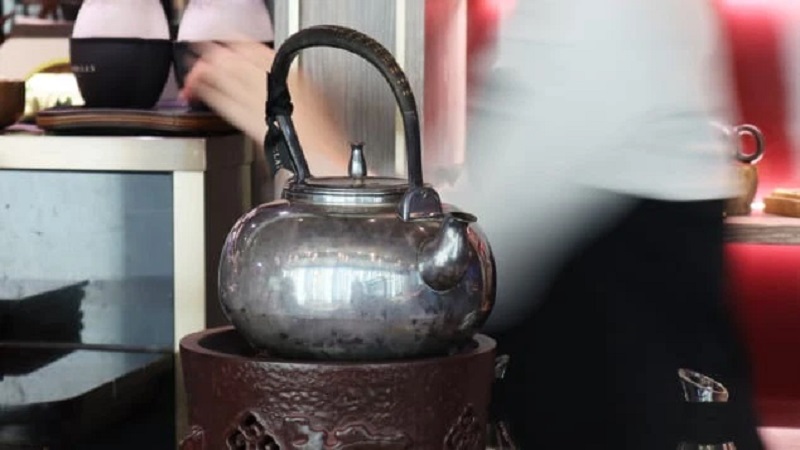
The boiling water in the silver kettle helps ionize, making the tea smoother
“A big problem with Chinese tea is that there is no subjective answer to what good tea is. There's a lot of love story and artistic element when it comes to selling tea, but very little about the real taste of tea," said Yeung, who also works in the wine industry, specializing in Burgundy. know. "If you look at alcohol and coffee, both are plant-based beverages and stand out a lot more than Chinese tea in the commercial market."
The lack of a clearly recognized standardization system leads to confusion over pricing. The market for tea is less transparent than for wine or coffee, so the price of a particular tea is still quite unknown to many people. Ms. Yeung said she and her team spent about 5 million USD to find the answer to that question over the past decade, and they decided to open Glassbelly in 2021.
The name Glassbelly was inspired by an ancient Chinese semi-mythical figure Shennong. According to legend, Shen Nong has a belly as transparent as glass. To help the world examine the uses and toxicity of vegetation, Scorpio will try every herb he encounters and remember its changes in his body, including tea.

Ms. Yeung hopes that the Glassbelly restaurant will shine in the market, thanks to its modern and scientific approach to tea. "The tea industry may have changed, but sales techniques are still as deadlocked as they were 1,000 years ago," she said.
Her comments are true. “It is very difficult to find out whether the tea is as advertised by the seller,” Ms. Yeung said. “We spent a fortune to buy exclusive 'premium' tea leaves, which is absolutely horrible. We learned in the process of starting a business.”
For customers who want to taste these premium teas, Ms. Yeung has an important reminder: "Eat a bite, or you'll get drunk." Tea has similar effects to alcohol, but with fewer side effects. Drinking tea can make people relax and feel light-headed, a phenomenon known as tea intoxication.

Ms. Yeung said: “Tea makes your meal richer. Therefore, I think this is a more suitable drink to pair with food than coffee and alcohol. Your tongue will be more sensitive when you drink tea." The first sip of tea can numb the tip of the tongue. After that, the taste of the tea will come slowly, then much more concentrated and gentle. Chinese tea usually has a specific fresh sweetness accompanied by a hint of bitterness.
Whether a tea tastes good or not depends on how you enjoy it. And this is also the answer to why tea costs so much. According to Ms. Yeung: “Many great teas are still cheaper than a bottle of fine Burgundy. Is that expensive?"

Bên cạnh sắc – hương –vị, trà khí cũng là yếu tố rất được trà hữu quan tâm. Trà khí, nói một cách dễ hiểu

The famous cold tea that smashes fatigue and wakes up instantly, did you know? The secret to making tea...
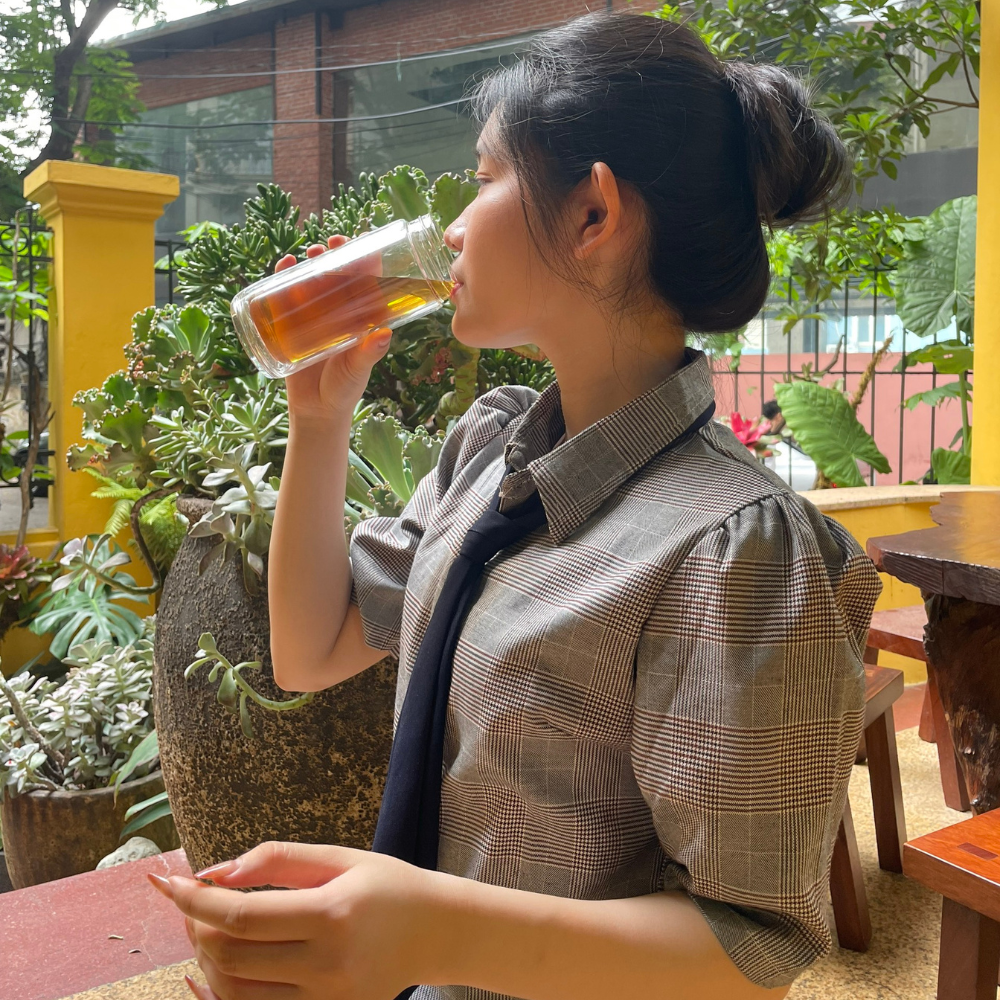
Trong cái nóng oi bức của mùa hè, việc nạp đủ nước cho cơ thể trở thành một yếu tố cực kỳ quan trọng để
